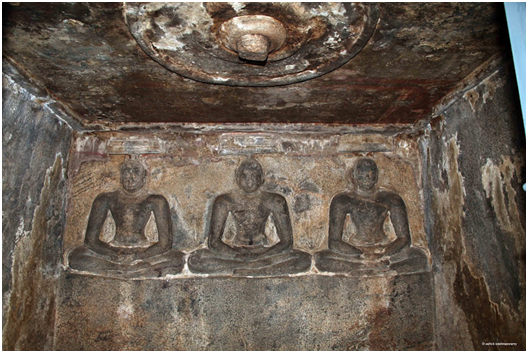Sittanavasal Caves
Context: With much of the art in Sittanavasal either damaged or vandalised, Archaeological Survey of India has undertaken conservation measures and also introduced digital checks to track public access
About Sittanavasal Caves (2nd century AD, Jain cave)
- Sittanavasal is the name used synonymously for the hamlet and the hillock that houses the Arivar Kovil (temple of Arihats — Jains who conquered their senses), Ezhadipattam (a cavern with 17 polished rock beds), megalithic burial sites and the Navachunai tarn (small mountain lake) with a submerged shrine.
- The artwork on the ceiling of the sanctum and the ardha mandapam of Arivar Kovil is an early example of post-Ajanta cave paintings of the fourth to sixth centuries, done using the fresco-secco technique.
- The ceiling paintings show ‘bhavyas’ (exalted souls who work to achieve moksha or spiritual liberation) enjoying themselves in a pool, full of lotuses.
Main teachings of Jainism
- Jainism rejects the idea of a creator of the world as well as the authority of the Vedas.
- Jainism believes that humans may be good or bad according to their actions and not on account of their birth.
- The Jains believe in karma and in the transmigration of the soul
- Salvation or nirvana comes on getting rid of the cycle of birth and rebirth, and can be attained by leading a pure life guided by the three-fold path of right faith, right knowledge and right conduct.
- Right to conduct involves– not to steal, non-possession, ahimsa, not to lie and control of the senses.
- The teachings of the Tirthankaras were compiled in 12 angas which were written down at Vallabhi in the 5th
Jainism councils
- First Jainism council: It was held at Pataliputra in the 3rd century BC. It was presided by Sthulabahu
- Second Jainism council: It was held at Vallabhi in Gujarat in 512 AD. It was presided over by Devardhigani. Angas were compiled during this time.
| Practice Question
1. Cave Architecture has been an important part of all the religions of India. Justify. |






